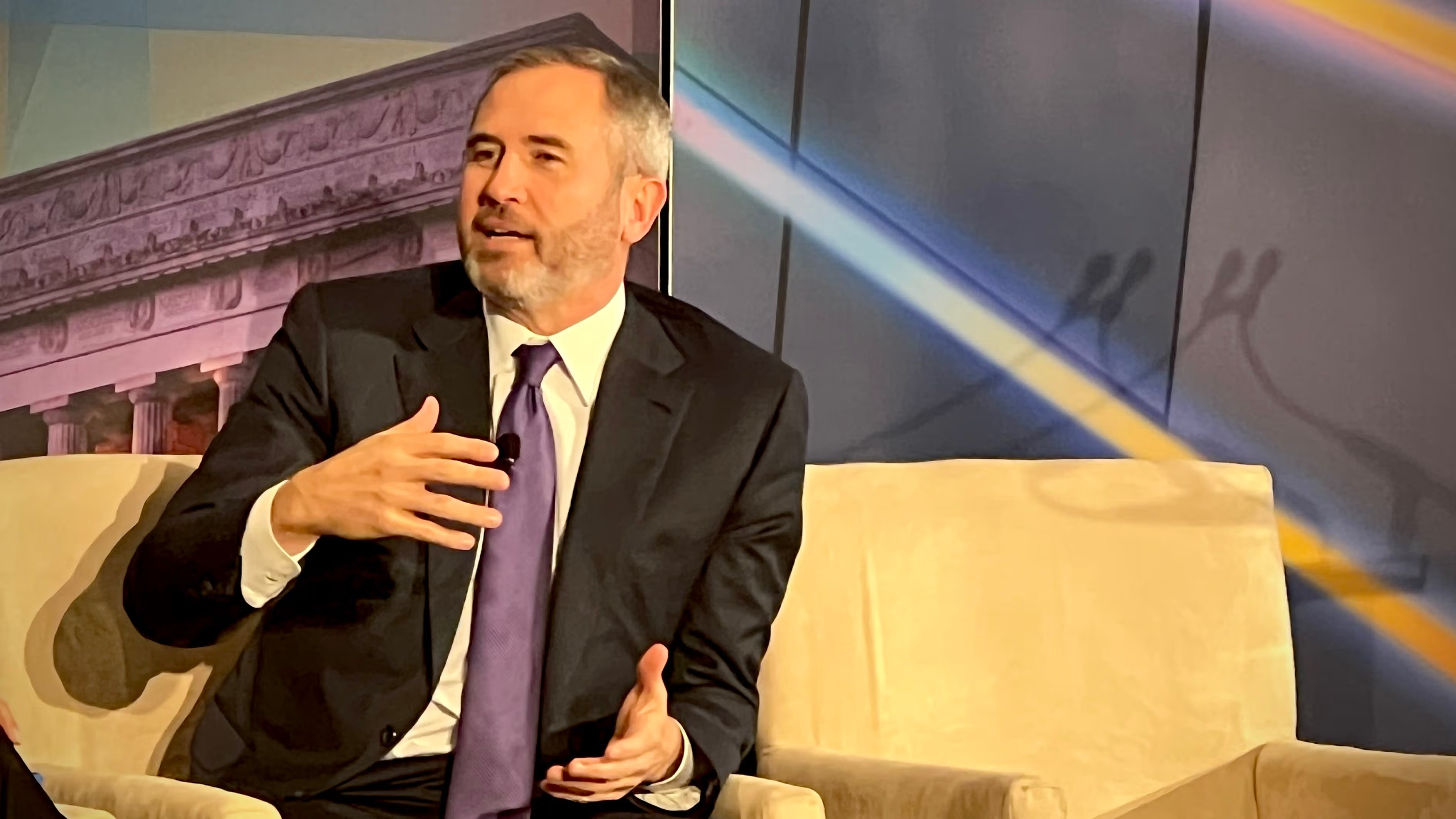Watch: Web3: Venture capital still pouring into crypto, claims head of Outlier Ventures | The Crypto Mile
Record levels of venture capital are still pouring into crypto, the head of one of the world’s leading web3 accelerators has claimed.
On this week’s episode of The Crypto Mile, Jamie Burke, CEO of Outlier Ventures discussed the overall health of crypto and web3 and forecasted how the sector will perform in 2023.
Burke suggested that venture capitalists still see potential in the crypto and web3 industry despite the salvo of ridicule levelled at the space since the collapse of Sam Bankman-Fried’s FTX exchange.
‘Not yet a crypto winter’
Many analysts claim that a prolonged crypto winter has set in and that this extended bear market, where the prices of cryptocurrencies decline, projects begin to falter and trading volumes drop, will last for at least one year.
However, Burke disagreed and said: “I still hold the line that it is not yet a crypto winter, as in a technological winter, referencing what happened over a couple of decades with AI.”
Check: Crypto live prices
He added: “A true crypto winter is when all capital dries up, and this is just not the case in web3. We still have billions of dollars in venture capital being allocated to this space, still to be deployed. We have new funds joining this space instead of seeing a slowing down.
“So whilst listed assets in the crypto-market proper are down anything from 17% to 90%, in venture we are seeing record levels of capital deployed.”
Big tech talent migrating into the web3 space
Across Silicon Valley, tech companies are slashing their workforces in a bid to cut costs in anticipation of a global economic downturn.
Facebook owner Meta (META) announced earlier this month it was laying off 11,000 of its workers, or 13% of its staff.
In contrast to this, Burke said talent is now migrating from web2 incumbents and knocking on the door of web3 projects, or starting their own enterprises.
He said: “We are seeing a huge amount of talent coming into the web3 space, a lot of people leaving web2, because big tech is imploding with huge amounts of layoffs.
“People from web2 are reassessing their lives, and they want to build in the web3 paradigm.”
Burke expects the healthy signals he is detecting from start-ups, venture capitalists, and web2 talent flocking into the web3 space, to eventually bolster current crypto assets.
Centralised exchanges
The Outlier Ventures founder added that although crypto has shown resilience throughout the years, what happens next is important, especially with how centralised exchanges are managed.
He stressed the need for centralised exchanges to actively utilise the the blockchain, the foundational technology behind the industry.
He said: “We have to accept centralised exchanges, but not in their current form. Centralised exchanges need to adopt the technology that they are giving people access to.”
One way of doing this is to connect reserve wallets to a publicly distributed ledger such as a blockchain, enabling real-time monitoring of exchange activity.
Benefits of the blockchain
The collapse of the FTX exchange may have struck a bitter blow to crypto’s reputation, but it also highlighted the benefits of blockchain transparency.
Burke argued that investigators would not have been able to carry out financial forensics on FTX transactions with such speed if it had not been for the transparency of publicly distributed ledger technology.
Read more: ECB official calls for ban on crypto
The same financial forensics that took just days to unravel after the FTX implosion, would have taken years in the opaque world of traditional finance.
Burke said: “Look at the speed of the forensic analysis after what happened at FTX, you compare that to Enron and how long it took to unwind equivalent frauds in traditional finance,” referring to the 2001 Enron scandal when the US corporation falsified its financial statements to hide billions of dollars in debt from failed deals and projects.
He added: “It can take years to piece together and get the picture after these collapses in traditional finance, if we ever get the picture at all.
“But if centralised exchanges in some way engage with blockchains we can find relationships between wallets and track flow.”
Proof of reserve assets
Burke also advocates that centralised crypto exchanges should reveal their balance sheets and reserves.
Binance, the largest cryptocurrency exchange, recently allowed auditing firm Mazars to explore their bitcoin (BTC-USD) reserves.
The report did not find any variation between Binance’s own account of its digital asset reserves and the audit. Binance launched a proof of reserves website two weeks ago.
More dominos could fall after the FTX implosion
Burke still sees a place for centralised exchanges, despite them taking a reputational hit after the collapse of FTX.
However, he does not think they should be domiciled in off-shore finance heavens in the same way as FTX in the Bahamas.
He suggested they should be located in key markets such as the US and that they will still be used for moving fiat currencies such as the dollar into the crypto-ecosystem.
Read more: Crypto and climate change: Can blockchain tech stop global warming?
Burke warned there could still be more collateral damage as a result of the collapse of the FTX exchange.
He suggested that some big actors in the crypto space are vulnerable and “should anything happen to them, then that poses a systemic risk to the whole industry”.
High volatility in crypto is to be expected
However, Burke added: “The crypto space has seen these cycles before and is used to this level of volatility.”
The roller coaster trajectory of the cryptocurrency market can be tracked by following the price of bitcoin, the ecosystem’s most valuable digital asset.
The MT Gox hack in April 2013 sent bitcoin prices plummeting from nearly $260 to $50.
In 2017, bitcoin peaked at nearly $20,000 only to collapse with the crash of early 2018, in an event known as the Great Crypto Crash.
Read more: UK finalises plan to regulate crypto
But the rate of adoption and retail investor interest increased from 2018 to a high water-mark in November 2021 when bitcoin reached $68,000.
However, several crypto-bubbles burst throughout 2022, including the Terra UST (LUNA20314-USD) crash, a multitude of bankruptcies, and now most recently the FTX collapse.
Crypto is a tightly interwoven economy and when one large entity hits the rocks they bring others with them.
Now the industry is poised on a ledge and its fate seems to hang in the balance.
Watch: Get your money off exchanges’ warns Bitboy Crypto after FTX scandal | The Crypto Mile
Read More: news.google.com









 Bitcoin
Bitcoin  Ethereum
Ethereum  Tether
Tether  XRP
XRP  Solana
Solana  Dogecoin
Dogecoin  USDC
USDC  Cardano
Cardano  Lido Staked Ether
Lido Staked Ether  TRON
TRON  Avalanche
Avalanche  Sui
Sui  Wrapped stETH
Wrapped stETH  Toncoin
Toncoin  Chainlink
Chainlink  Shiba Inu
Shiba Inu  Wrapped Bitcoin
Wrapped Bitcoin  Stellar
Stellar  Hedera
Hedera  Polkadot
Polkadot  WETH
WETH  Bitcoin Cash
Bitcoin Cash  LEO Token
LEO Token  Litecoin
Litecoin  Uniswap
Uniswap  Pepe
Pepe  Hyperliquid
Hyperliquid  Wrapped eETH
Wrapped eETH  NEAR Protocol
NEAR Protocol  Ethena USDe
Ethena USDe  USDS
USDS  Internet Computer
Internet Computer  Aptos
Aptos  Aave
Aave  Mantle
Mantle  POL (ex-MATIC)
POL (ex-MATIC)  Ethereum Classic
Ethereum Classic  Cronos
Cronos  Render
Render  MANTRA
MANTRA  Bittensor
Bittensor  Monero
Monero  Tokenize Xchange
Tokenize Xchange  Dai
Dai  Artificial Superintelligence Alliance
Artificial Superintelligence Alliance  Virtuals Protocol
Virtuals Protocol  Arbitrum
Arbitrum